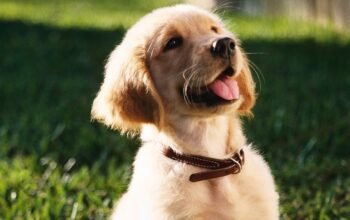Step 1: Socialization
Socialization is key to raising a well-rounded dog. Introduce your puppy to new people, places, and other pets as early as possible. This will help them become comfortable in different situations and less likely to develop fear or aggression. Take them for walks in different neighborhoods, visit dog parks, and invite friends and family to meet your pup.
Step 2: Crate Training
Crate training provides several benefits, including making potty training easier, establishing good habits, and creating a safe space for your puppy to relax. Start by introducing the crate gradually, making it a positive experience by placing treats and toys inside. Gradually increase the amount of time your puppy spends in the crate, and never use it as punishment.
Step 3: Start Training Through Play
Play is not just for fun; it’s also a fantastic way to teach your puppy new skills. Use plush toys and rope toys to teach impulse control and fetch. Hide treats and toys around the house to encourage them to use their nose and problem-solving skills. Playtime is also a great opportunity to bond with your puppy and build trust.
Step 4: Be Patient and Consistent
Puppies learn at their own pace, and it can take time and patience to see results. Be consistent with your training methods and avoid getting frustrated. Positive reinforcement, using treats and praise to reward good behavior, is the most effective way to train puppies. Never use punishment, as it can damage your relationship with your dog and lead to fear or aggression.
Additional Tips:
- Make sure your puppy is well-rested and has had a potty break before starting a training session.
- Have high-value treats on hand to reward your pup for good behavior.
- Find a quiet, distraction-free place to practice training.
- Keep training sessions short and fun to maintain your puppy’s engagement.
- Consider enrolling in a puppy training class for additional guidance and support.
First Steps in Training:
Housetraining:
This is arguably the most important initial step. Start by taking your puppy outside frequently, especially after meals, naps, and playtime. Use a consistent cue word like “go potty” and reward your pup when they eliminate outside.
Basic Commands:
Once your puppy has a good grasp of housetraining, you can start teaching them basic commands like sit, stay, come, and down. Use clear and consistent verbal cues and hand gestures, and reward your pup immediately when they obey.
Leash Training:
Teaching your puppy to walk politely on a leash is essential for safe and enjoyable walks. Start by practicing in a quiet area with minimal distractions. Use positive reinforcement to encourage your pup to walk beside you, and avoid pulling on the leash.
Most Important Dog Commands:
- Sit: This is a versatile command that can be used to control your dog’s behavior in various situations.
- Stay: This command teaches your dog to remain in one place until released. It’s crucial for safety and can be helpful in crowded areas.
- Come: This command ensures your dog returns to you when called, making walks and play sessions more enjoyable and safe.
- Down: This command helps your dog settle down and relax. It’s useful for calming them down in exciting situations.
- Leave it: This command teaches your dog to ignore distractions and focus on you. It can help prevent them from eating harmful objects or engaging in unwanted behavior.
- Off: This command teaches your dog to get off furniture or people when asked.
- Wait: This command helps your dog control their impulse and wait patiently before receiving something they desire.
By following these steps and tips, you can successfully train your puppy at home and develop a strong and lasting bond with your furry companion. Remember, patience, consistency, and positive reinforcement are key to successful dog training.






